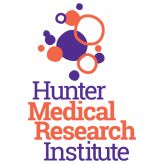Asthma researchers' virus and allergy breakthrough
Paediatric and respiratory researchers from the University of Newcastle, along with national and international collaborators, are a step closer to identifying the source of serious virus-and allergen-induced asthma attacks after detecting important molecular signals generated very early in the disease process.

Led by Professor Joerg Mattes*, the team of researchers and clinicians spent several years tracking a new pathway and investigating the mechanisms that trigger airway inflammation and cause asthma attacks.
The results are published today in Nature Medicine, the world's leading journal for biomedical research.
Researchers from the University of New South Wales, the University of Cincinnati and the Imperial College London took part in the investigation.
The pre-clinical study targeted the common cold (rhinovirus), which is the virus that causes most asthma attacks;and the effects caused by allergens such as house dust mites.
"Asthma results in more than 30,000 hospitalisations per year in Australia alone, many of which are children, and we know that two-thirds of these asthma attacks are caused by viruses," Professor Mattes said.
"Asthmatics experience severe and prolonged symptoms when infected with the common cold virus or exposed to allergens, both of which promote inflammation in the lungs and production of mucus.
"Asthma attacks are currently treated similarly regardless of whether they are caused by viruses or allergens.
However virus-induced effects are much less responsive to current therapies, which is why this investigation is so important."
A comprehensive gene expression analysis led to the initial discovery of the signals – proteins otherwise known as midline 1 and protein phosphatase 2A.
"The proteins are generated in the innermost layer of the airways, where the body has first contact with allergens and viruses, and once activated they appear to modulate many other disease factors," Dr Adam Collison**, one of the study authors from Professor Mattes' research team, said.
"Obviously it is better to target these earlier signals rather than the hundreds of downstream effects."
The researchers have already begun testing therapeutic strategies to modify the pathway, setting a platform for the development of targeted drugs ahead of full clinical trialling.
"We have seen that this pathway operates in the cells of asthmatics, and our pre-clinical disease models showed that we can inhibit the pathway and protect against the development of both virus- and allergen-induced asthma," Professor Mattes said.
He advised sufferers to be vigilant with their asthma management during late summer and winter, the worst times for cold epidemics.
*Professor Mattes works at John Hunter Children's Hospital and is Chair of Paediatrics and Child Health at the University of Newcastle's School of Medicine and Public Health. He researches as a member of the Hunter Medical Research Institute's (HMRI) VIVA program.
**Dr Collison is a member of the University of Newcastle's Priority Research Centre for Asthma and Respiratory Diseases; the University's Experimental and Translational Respiratory Group; and HMRI.
HMRI is a partnership between the University of Newcastle, Hunter New England Health and the community.
For interviews with Professor Mattes please contact: Robbie Macaulay, HMRI Communications, (02) 4042 0589 or 0421 964 575.
Related news
- Broome to breakthrough: How mental health nursing became Lisa’s life calling
- Indigenous-led quit smoking program upscales nationally to help close the gap
- Bar on The Hill reopens: A new chapter for a Newcastle tradition
- HunterWiSE showcases region's young STEM innovators
- Heath scores Wollotuka support to succeed
The University of Newcastle acknowledges the traditional custodians of the lands within our footprint areas: Awabakal, Darkinjung, Biripai, Worimi, Wonnarua, and Eora Nations. We also pay respect to the wisdom of our Elders past and present.